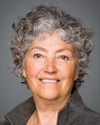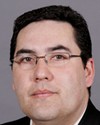Thank you, Mr. Chair.
Very quickly, with the aboriginal human resource development agreements, I was around when the first One Agreement models were—away back when. Those are great. It would be nice to see huge investments in this area and build on those successes.
I want to follow up on Ms. Dhalla's question with the ASEP moneys, because $5 million, $30 million, $7 million, $7 million, $7 million—that does not add up to $105 million. Once we get around to that, maybe you can explain that. Maybe I misunderstood the breakdown.
With respect to the gender reports, perhaps we can get those. In what timeframe would we be able to secure them?
The ACCC is a great organization that we partnered with. I used to be chairman of SIIT and we hosted the big—I think we met there, actually.
With respect to NWAC, in my former position it was the women in our communities who carried the economy. They outnumbered the men in our area five to one in post-secondary training and employment. The need for child care, for transportation, and for other supports is absolutely critical and it must happen, so I applaud you.
I want to ask Mr. Dinsdale about friendship centres and their huge role in employability, which is what we are studying here. You've become, as friendship centres, the Jack and Jane of all trades in the urban areas. You are doing a bit of child care upgrading, employment readiness, resumé-making, employment training. You have an infrastructure where you can point to successes.
What do you think you would need in the next little while to actually build on those successes?







